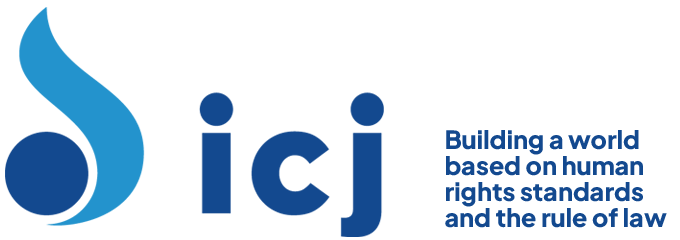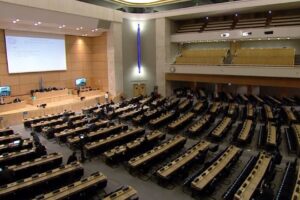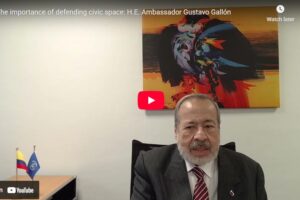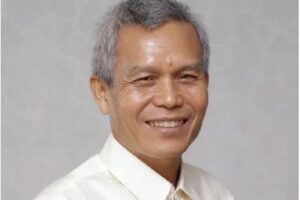III. Twenty years of developments within the United Nations and a reflection on the continuing challenges{{1}}
B. Commission on the Status of Women
18. The CSW session in 2013 was challenging, with strong pressure from some States to prevent the inclusion of language referring to sexual orientation, gender identity or intimate partner violence, and contestation over a wider interpretation of the “family”. Nevertheless, new themes did emerge in the conclusions, including the need to support and protect women human rights defenders who work on gender-based violence; the need for governments to promote and protect the human rights of all women, including their right to have control over, and decide freely and responsibly, on matters relating to their sexuality, including sexual and reproductive health, free of coercion, discrimination and violence; specific commitments on the part of governments to ensure the safety of girls in public and private spaces; commitment to end early and forced marriage; and to prevent, investigate and punish acts of violence against women and girls, committed by people in positions of authority, such as teachers, religious leaders, political leaders and law enforcement officials.
D. Resolutions and declarations
28. In 2006, the Human Rights Council replaced the Commission on Human Rights and, essentially, retained in its resolutions the wording of the Commission’s resolutions. Between 2007 and 2013, the Human Rights Council adopted 28 resolutions relating directly or indirectly to the mandate of the Special Rapporteur on violence against women, its cause and consequences.{{14}} The seven resolutions that are directly relevant to the mandate largely revolve around the theme of accelerating efforts to eliminate all forms of violence against women, including the issue of due diligence with regard to prevention, protection and the provision of remedies for women who have been subjected to violence. Other resolutions relevant to the mandate concern the integration of the human rights of women throughout the United Nations system; adequate housing as a component of the right to an adequate standard of living; preventable maternal mortality and morbidity as a human rights issue; the elimination of discrimination against women; trafficking in persons, especially women and children; human rights, sexual orientation and gender identity; the right to a nationality for women and children; the protection of human rights defenders who provide support to women who have been subjected to violence; and most recently, the role of freedom of opinion and expression in women’s empowerment.
F. Mandate of the Special Rapporteur
60. The holistic approach to women’s rights, by situating violence against women on a continuum from the home to the transnational sphere, has been further developed by the Special Rapporteur in her reports to the General Assembly, such as her 2011 report (A/66/215). In that report, she recommended that States engage in transformative remedies to confront the root causes of violence against women, in order to achieve individual, institutional and structural change. In her 2012 and 2013 reports to the General Assembly, the Special Rapporteur dealt with two issues that had not been specifically addressed in previous thematic reports, namely, violence against women with disabilities{{37}} and violence with respect to the incarceration of women.{{38}} Both reports provide a clear illustration of how violence against women intersects with other factors, including different forms of inequality and identity status, such as poverty, health, race, ethnicity, sexual orientation, religion and language.
Link to full text of the report: Report-SRVAW-2014-eng
[[1]]1. The Special Rapporteur would like to thank Corey Calabrese, Naureen Shameem, Lucia Noyce, Erin Jardine, Maithilli Pradhan, Nina Anderson, Claire Malcolm and Helen Griffiths for their research assistance.[[1]]
[[14]]14. See Human Rights Council resolution 6/27 and subsequent resolutions on women.[[14]]
[[37]]37. A/67/227.[[37]]
[[38]]38. A/68/340.[[38]]




